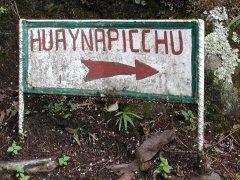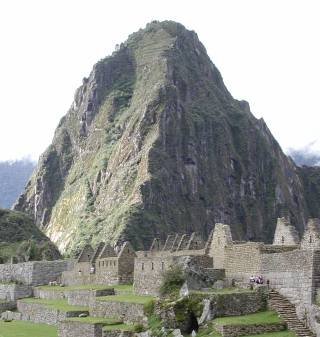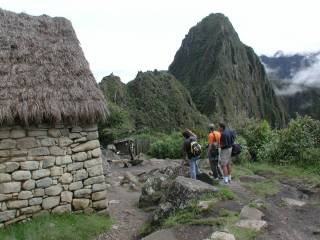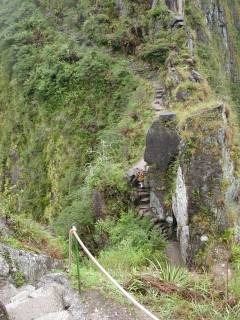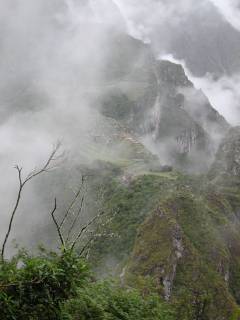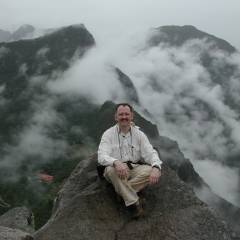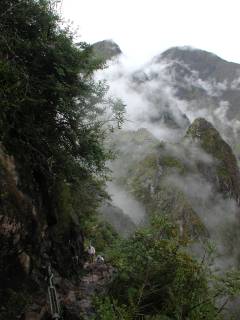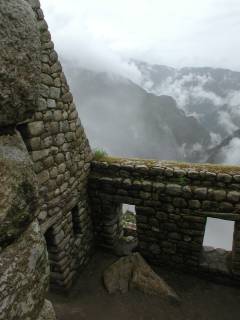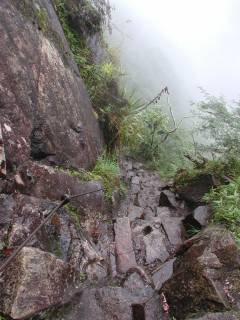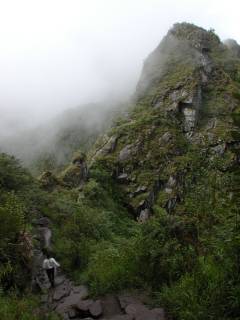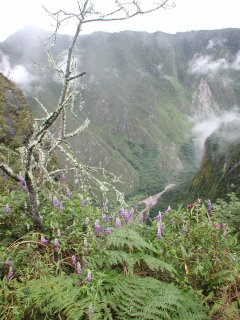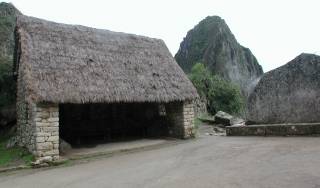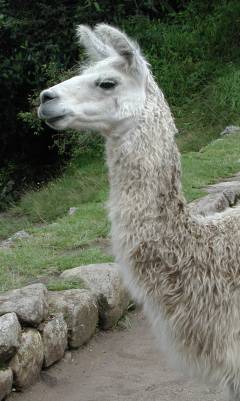|
Exotic but Easy...Huayna Picchu, Peru |
|
Shortly after leaving the summit, you run into the only other third-class move of the climb. A large boulder bisects the trail, and passing it requires hanging onto the shoulder-height edge of the boulder and swinging a leg around the corner to the continuation of the trail, with your nether parts briefly hung out in space. Not the spot to let go, but merely a sporty spot to overcome. |
|
Respectfully submitted by
Alan Ritter,
April 2002 |
